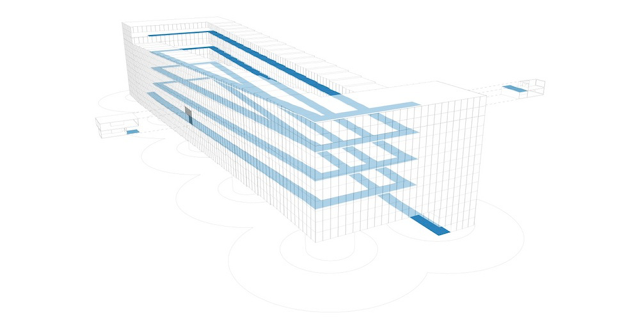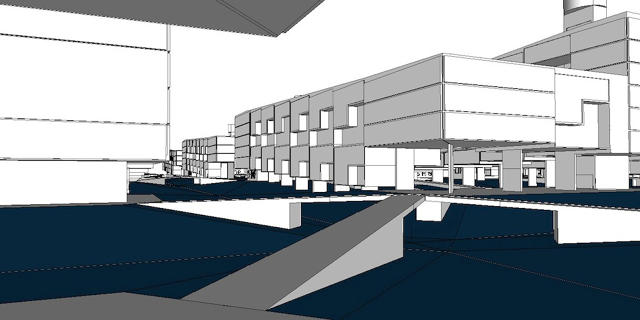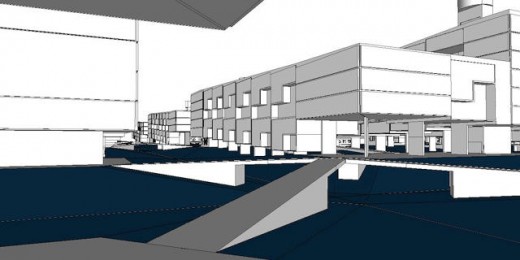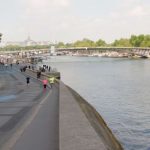What A metropolis would prefer If It was Designed For simplest Bikes (No vehicles Allowed!)
Coasting down from your condominium to your personal bike ramp shall be so fun.
October 14, 2015
The extra that bike lanes multiply in cities, from the big apple to São Paulo, the extra people ride. over the past decade, bike commuting in the U.S. has grown 62%. however it’s still a tiny fraction of total transportation.
with a purpose to in reality get folks out of cars, a gaggle of Australian designers thinks we wish to fully redecorate cities—including the way we make constructions.
“the town of the long run must no longer have infrastructure for biking,” writes Steven Fleming, an city design professor and director of Cycle area, an organization that reimagines bike-primarily based urban design. “It must be infrastructure for cycling.”

In Sydney, the designers looked at how the city might be rebuilt with a brand new network of lanes—together with a motorbike-friendly apartment constructing in the center, with ramps that lead in an instant to every floor. Cyclists may take an elevator as much as their floor and coast down the ramp into their apartment; once they want to depart, they can coast down a number of stories of ramps right away into a motorbike lane. principally, the network of motorcycle lanes extends into the constructing itself.
“Residential bike parking should have the same space-syntax relationship to the front door and kitchen as automotive parking does in a up to date house within the suburbs,” Fleming says.
He calls it the “begin of trip” downside—even supposing a metropolis has nice bike lanes, if someone does not have an effective way to store and get entry to their bike, they would possibly not wish to experience. Bike-pleasant cities like Copenhagen nonetheless combat with what happens when you get home or arrive at a destination.
“They’ve executed the cycle tracks and are actually doing more pedestrian bridges,” Fleming says. “there’s no doubt they are leaders. the town’s problem, though, is the shortage of . . . housing stock that protects bikes from vandals and thieves.”

carried out right, he says, architecture would have space for folks to retailer bike in their kitchen, and even perhaps wheel their bike via retailers as they retailer, with a sleeping child within the bike provider, or use the basket to hold groceries. “Bicycletecture, as I wish to call it, would do extra for households than the ‘carchitecture’ they are able to get in the suburbs,” he says. “they could elevate their babies, work, keep, and exercise more effectively.”
The designers’ mockup for Sydney additionally incorporates a distribution center on the backside of the bikeable rental building, in line with the concept that if town has a good bike community, it will possibly in reality be faster to deliver your latest Amazon order on the back of a cargo bike relatively than on a van.
Bike lanes would even be redesigned, with covers that protect cyclists from rain, snow, or sunburn, so they can journey in any climate. “when you consider that earlier period, city mobility has gone undercover,” Fleming says. “Motorists and buyers of public transport have their carriages’ roofs. Pedestrians have awnings and colonnades—or did have, before traffic engineers intervened. i don’t see why biking should be the exception to an eternal rule of urban design, and as a substitute celebrate Gore-Tex and sunscreen.”
traffic techniques will also be redesigned for bikes as well; Fleming points out that if cyclists did not have to prevent for cars at traffic lights, they could continuously run errands sooner than someone riding in heavy traffic. “that is one of those neat revelations like finding it can be faster making dinner with a chopping board and a knife than a food processor,” he says.
In another set of sketches, the designers lay out what a full “Velotopia” may look like. On the streets, everyone would use a bike, from police to taxis. Heavier electrical bikes would deal with deliveries. structures are spanned with the aid of pedestrian bridges, whereas bikes can fly down devoted lanes and up ramps into stores or offices. the entire buildings have built-in bike lanes to reach each ground, and can be topped with parks or urban farms.
Fleming hopes it can be the kind of grand imaginative and prescient for biking that can assist result in greater changes, just like older visions for different types of transport.

“the car has Wright’s Broadacre and all of those Nineteen Thirties avant-garde visions,” he says. “Public transport has Howard’s plan of the right backyard metropolis. strolling has the ecu old city as its hero. If town were a football box, then those three city planning paradigms are being performed suddenly, like separate games of soccer, gridiron, and rugby—the messy vitality we like about cities. Academia gave me the time and the liberty to plot a fourth code.”
Now he’s hoping that cities take the tips and start to use them. he’s been testing the designs in the true world already, and says they are designed to satisfy the sector’s hardest constructing codes. “So yes, that is one hundred% actual,” he says.
[All images: by means of Cycle space]
(99)














